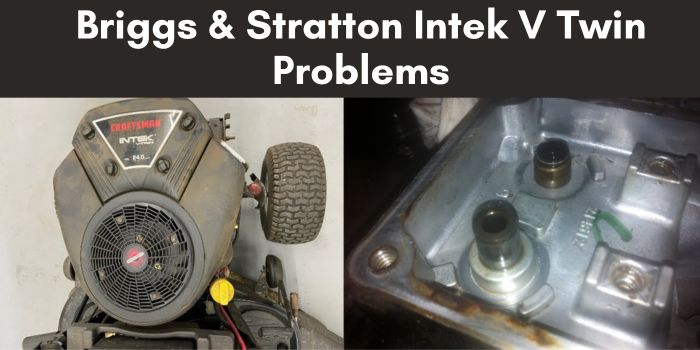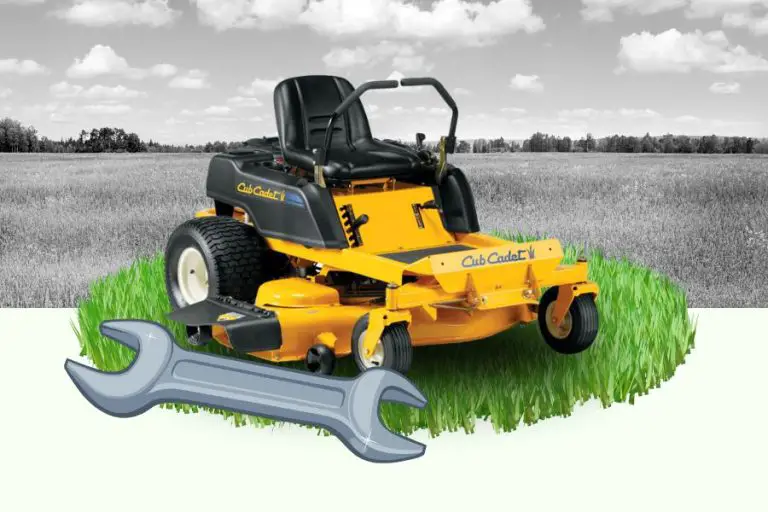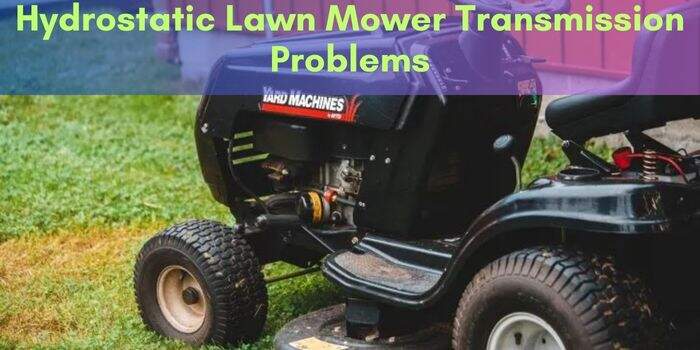Briggs & Stratton Intek V Twin Problems: Troubleshooting Guide
Briggs & Stratton Intek V Twin Problems can stem from common issues such as ignition coil failure or carburetor clogs, resulting in engine misfiring or poor performance.
The Importance Of Troubleshooting For Briggs & Stratton Engines
Troubleshooting for Briggs & Stratton engines is crucial for addressing common problems with the Intek V Twin model.
Timely and accurate troubleshooting helps resolve issues and ensures smooth engine performance, extending the engine’s lifespan. Proper maintenance and troubleshooting techniques are essential for optimal functionality.
If you’re a proud owner of a Briggs & Stratton Intek V Twin engine, you may have experienced some issues along the way. Troubleshooting these problems is essential for maintaining optimal engine performance and ensuring a smooth and efficient operation.
In this section, we will explore the common issues faced by Briggs & Stratton Intek V Twin engines and highlight the significance of troubleshooting for resolving these challenges.
Common Issues Faced By Briggs & Stratton Intek V Twin Engines:
- Engine misfiring: Misfiring can occur due to various reasons, such as a clogged fuel line, dirty air filter, or faulty spark plug. Addressing these issues promptly is crucial to prevent further damage and restore smooth engine performance.
- Overheating: Overheating is a common problem that can stem from issues like low oil levels, a malfunctioning cooling system, or improper fuel mixture. Regularly monitoring the engine temperature and troubleshooting cooling system-related problems can help prevent severe damage to the engine.
- Starting problems: Difficulty starting the engine can be caused by a range of factors, including a weak battery, faulty ignition switch, or clogged carburetor. Troubleshooting these issues will help identify the root cause and enable swift resolution for a hassle-free start-up experience.
- Loss of power: If your engine experiences a sudden loss of power, it could be due to issues like a dirty carburetor, fuel filter blockage, or a malfunctioning governor. Thorough troubleshooting can help pinpoint the problem area and restore the engine’s power output.
- Excessive vibration: Vibrations beyond the normal range can indicate underlying issues such as a loose blade, worn-out engine mounts, or imbalanced components. Troubleshooting these problems will not only enhance engine performance but also ensure operator comfort and safety.
The Significance Of Troubleshooting For Optimal Engine Performance:
- Preventing costly repairs: By troubleshooting problems at the earliest signs, you can catch minor issues before they escalate into major and expensive repairs. Regular monitoring and troubleshooting can save you both time and money in the long run.
- Extending engine lifespan: Identifying and resolving problems promptly through troubleshooting can help prolong the life of your Briggs & Stratton Intek V Twin engine. By addressing issues early on, you can prevent further damage and ensure the engine operates at its peak performance for years to come.
- Maintaining efficiency: Troubleshooting ensures that your engine operates efficiently, optimizing fuel consumption and minimizing harmful emissions. By identifying and addressing issues affecting engine performance, you can ensure that your Briggs & Stratton engine continues to run smoothly and meets environmental standards.
- Enhancing user experience: A well-maintained engine provides a seamless user experience. By troubleshooting and resolving issues, you can enjoy the benefits of a reliable engine that starts effortlessly, delivers consistent power, and operates smoothly without unexpected interruptions.
Identifying Engine Starting Problems
Having trouble starting your Briggs & Stratton Intek V Twin Engine? Learn how to identify common starting problems and get your engine running smoothly again.
Having trouble getting your Briggs & Stratton Intek V Twin engine started? Don’t worry, we’ve got you covered.
In this section, we will guide you through the process of identifying engine starting problems and provide troubleshooting tips to help you get your engine up and running smoothly.
Signs Of Ignition System Problems
If your engine is experiencing starting issues, it could be due to problems with the ignition system.
Look out for the following signs to determine if this is the case:
- Engine cranks but doesn’t start: When you try to start the engine, it cranks over but fails to ignite. This could indicate issues with the ignition coil, spark plugs, or spark plug wires.
- No spark in the spark plug: Check the spark plug by removing it and grounding it to the engine block. If there’s no spark when you try starting the engine, it’s a clear indication of ignition system problems.
- Intermittent starting issues: If the engine starts occasionally but fails to start consistently, it could be a sign of a faulty ignition system component.
Troubleshooting Tips For Starting Issues
Now that you’ve identified the signs of ignition system problems, let’s take a look at some troubleshooting tips to help you address starting issues with your Briggs & Stratton Intek V Twin engine:
- Check the spark plugs: Inspect the spark plugs for signs of wear, damage, or deposits. Clean or replace them if necessary.
- Test the spark plug wires: Ensure that the spark plug wires are securely connected and free from any damage or corrosion. Replace them if needed.
- Examine the ignition coil: Inspect the ignition coil for any visible damage or signs of wear. If it is faulty, consider replacing it.
- Verify the ignition switch: Check if the ignition switch is functioning properly. Faulty switches can prevent the engine from starting.
- Inspect the fuel system: Ensure that the fuel tank has an adequate supply of clean fuel. Check for clogged fuel filters or fuel lines that could restrict fuel flow.
- Check the battery: If your engine is equipped with an electric starter, make sure the battery is fully charged and in good condition.
- Pay attention to the carburetor: A clogged carburetor can prevent fuel from reaching the engine. Clean or rebuild the carburetor if necessary.
- Review the air filter: A dirty or clogged air filter can impede proper airflow, affecting engine starting. Clean or replace the air filter as required.
Remember, troubleshooting engine starting issues may require some trial and error. Start with the simple steps and gradually move towards more complex solutions if needed.
Diagnosing Fuel System Problems
Diagnosing Fuel System Problems in Briggs & Stratton Intek V Twin engines can be done by examining fuel lines, checking for clogs or leaks, and testing the fuel pump and filters.
It is important to identify and address any issues promptly for optimal engine performance.
Symptoms Of Fuel System Problems
- Engine does not start or is difficult to start: This could indicate a fuel delivery issue within the Briggs & Stratton Intek V Twin engine.
- Engine stalls or runs rough: If the engine stalls or runs unevenly, it may point to a problem in the fuel system.
- Lack of power or poor performance: A clogged fuel system can cause a reduction in power or overall poor engine performance.
- Excessive fuel consumption: If you notice that your engine is consuming more fuel than usual, it could be due to a fuel system problem.
Troubleshooting Techniques For Fuel Delivery Issues
Here are some techniques to help diagnose and troubleshoot fuel delivery issues in your Briggs & Stratton Intek V Twin engine:
- Check the fuel tank: Ensure that there is an adequate amount of fuel in the tank.
- Inspect fuel lines: Look for any cracks, leaks, or blockages in the fuel lines that may be impeding the fuel flow.
- Clean or replace the fuel filter: A clogged fuel filter can restrict fuel flow and cause engine problems. Clean or replace the filter if necessary.
- Examine the fuel pump: Verify that the fuel pump is functioning properly and delivering fuel to the engine.
- Clean the carburetor: If the engine experiences fuel system issues, a dirty or clogged carburetor could be the culprit. Cleaning the carburetor can often resolve the problem.
- Verify the fuel valve: Ensure that the fuel valve is turned on and allowing fuel to flow to the engine.
- Test the fuel solenoid: If your engine has a fuel solenoid, test it to determine if it is functioning correctly.
- Check the fuel cap: A faulty or loose fuel cap can cause fuel system problems. Make sure the cap is securely tightened.
Tackling Cooling System Challenges
Tackling cooling system challenges can be daunting, especially when dealing with Briggs & Stratton Intek V-twin problems.
Engine overheating is a common problem that Briggs & Stratton Intek V Twin engines may encounter.
In this section, we will delve into the overheating signs, common causes, and troubleshooting measures for cooling system problems.
Overheating Signs And Causes:
- Engine temperature gauge reading in the red zone: This indicates that the engine is running hotter than normal, potentially due to cooling system issues.
- Steam or white smoke coming from the engine: Excessive heat can lead to coolant boiling and resulting in steam or white smoke.
- Unusual engine noise: Overheating can cause knocking or pinging noises in the engine due to increased friction and pressure.
- Loss of engine power: When the engine gets too hot, it may lose power or even shut off to prevent further damage.
- Leaking coolant: A visible coolant leak can be a sign of cooling system problems, leading to overheating.
Potential causes of overheating in Briggs & Stratton Intek V Twin engines include:
- Insufficient coolant levels: Low coolant levels can result in inadequate heat dissipation and lead to engine overheating.
- Clogged radiator: The radiator may collect dirt, debris, or mineral deposits over time, impeding proper airflow and reducing cooling efficiency.
- Malfunctioning thermostat: A faulty thermostat can prevent the proper flow of coolant, causing overheating.
- Defective water pump: A failing water pump may not circulate coolant effectively, leading to heating issues.
- Cooling system blockages: Blockages within the cooling system, such as in hoses or the radiator, can restrict the flow of coolant and lead to overheating.
Troubleshooting Measures For Cooling System Problems:
To effectively address cooling system challenges in your Briggs & Stratton Intek V Twin engine, consider the following troubleshooting measures:
- Check coolant levels: Ensure that the coolant reservoir is filled to the proper level as indicated in the owner’s manual.
- Inspect the radiator: Look for any signs of debris, dirt, or mineral deposits in the radiator fins. Clean or flush the radiator if necessary.
- Test the thermostat: Verify if the thermostat is functioning correctly by observing the coolant flow through the system. Replace the thermostat if needed.
- Inspect the water pump: Check for any leaks or malfunctioning components in the water pump. Replace or repair it if necessary.
- Clear cooling system blockages: Inspect the hoses, radiator, and other parts of the cooling system for blockages. Use flushing agents or clean out any obstructions to ensure proper coolant flow.
Resolving Performance And Power Loss Issues
Resolve performance and power loss problems with Briggs & Stratton Intek V Twin engines. Our solutions address issues such as reduced power, poor acceleration, and inconsistent performance, ensuring optimal engine functioning. Trust our expertise to maximize the efficiency and reliability of your equipment.
Briggs & Stratton Intek V Twin engines are known for their power and performance on various outdoor equipment, from lawn mowers to generators.
However, like any mechanical device, these engines can experience performance and power loss issues. In this section, we will explore the indications of performance and power loss and provide troubleshooting steps to restore engine power.
Indications Of Performance And Power Loss:
- Engine misfires: If your Briggs & Stratton Intek V Twin engine is misfiring, it can lead to a noticeable loss of power. You may experience uneven engine operation or hear a popping sound from the exhaust.
- Reduced top speed: Are you noticing that your equipment is not reaching its usual top speed? This can be a sign of power loss in your Intek V Twin engine. It may struggle to maintain high speeds or feel sluggish when accelerating.
- Difficult starting: A noticeable decrease in engine power can be felt during the starting process. If your engine takes longer to start or requires multiple attempts, it could be due to underlying performance issues.
- Increased fuel consumption: Performance and power loss can also manifest as increased fuel consumption. If you find that your equipment is consuming more fuel than usual, it may indicate inefficiencies in the engine’s performance.
Troubleshooting Steps To Restore Engine Power:
- Check spark plugs: Faulty or worn-out spark plugs can contribute to performance loss. Inspect the spark plugs for signs of fouling, corrosion, or wear. Replace them if necessary.
- Clean or replace air filters: A clogged or dirty air filter can restrict airflow to the engine, resulting in power loss. Regularly clean or replace the air filters to ensure optimal performance.
- Fuel system inspection: Inspect the fuel tank, fuel filter, and fuel lines for any blockages or contaminants. Clean or replace these components as needed to maintain optimal fuel flow.
- Adjust carburetor settings: Improperly adjusted carburetor settings can lead to performance issues. Consult the Briggs & Stratton Intek V Twin engine manual or seek professional assistance to properly adjust the carburetor.
- Check for leaks: Inspect the engine for any oil or fuel leaks. Leaks can affect engine performance and power. Repair any leaks and ensure all connections are secure.
- Regular maintenance: Perform regular maintenance tasks such as oil changes, lubrication, and belt inspections as outlined in the engine manual. Neglecting maintenance can contribute to performance and power loss.
Addressing Oil System Concerns
Addressing oil system concerns in Briggs & Stratton Intek V Twin engines. Solving common problems and optimizing performance for a smoother running engine.
Briggs & Stratton Intek V Twin Problems:
Is your Briggs & Stratton Intek V Twin engine experiencing oil system issues? Don’t worry, we’ve got you covered.
Signs Of Oil System Issues:
- Low Oil Level: If you notice that the oil level in your Intek V Twin engine is consistently low, it may indicate a problem with the oil system. This could be due to leaks, improper oil circulation, or inadequate oil maintenance.
- Smoke and Exhaust Issues: Excessive smoke, particularly dark or blue smoke, coming from the exhaust can be a sign of oil system problems. It may indicate oil burning or leaking into the combustion chamber, leading to poor engine performance.
- Oil Contamination: If your engine oil appears milky or foamy, it is a clear indication of oil contamination. This can be caused by coolant mixing with the oil, which is a serious issue that needs immediate attention.
- Overheating: An overheating engine can sometimes stem from oil system problems. Inadequate lubrication due to oil leaks or blockages can lead to increased friction and heat, resulting in engine overheating.
Troubleshooting Methods For Oil-Related Problems:
- Check Oil Level Regularly: Make it a habit to check the engine oil level frequently. If it is consistently low, ensure proper oil maintenance by refilling with the recommended oil. Keep in mind that overfilling can also cause issues, so follow the manufacturer’s guidelines.
- Inspect Oil Lines and Seals: Look for any visible signs of oil leaks such as oil stains, dripping, or pooling around the engine. Inspect oil lines, gaskets, and seals for any cracks or damage. Replace or repair as necessary to prevent further oil system problems.
- Clean or Replace Oil Filter: A clogged or dirty oil filter can hinder oil circulation, leading to inadequate lubrication. Regularly clean or replace the oil filter based on the manufacturer’s instructions to ensure smooth oil flow.
- Address Cooling System Issues: If coolant is mixing with the oil, it needs immediate attention. Check the cooling system for any leaks or malfunctions and fix them promptly to prevent further oil contamination.
- Seek Professional Help: If you’ve tried troubleshooting the oil system issues but are still encountering problems, it’s recommended to seek professional assistance. A certified technician with expertise in Briggs & Stratton engines can diagnose and fix the issue efficiently.
By being proactive and addressing oil system concerns promptly, you can prevent further damage to your Briggs & Stratton Intek V Twin engine.
Remember, a healthy oil system is key to optimal engine performance.
Fixing Electrical System Malfunctions
Are you experiencing electrical system malfunctions with your Briggs & Stratton Intek V Twin engine?
Our experts can help you fix the problems efficiently and effectively, ensuring optimal performance of your engine. Say goodbye to frustrating malfunctions and enjoy smooth operation once again.
Troubleshooting Guidance For Electrical Issues
Electrical system malfunctions can be quite a headache for Briggs & Stratton Intek V Twin engine owners.
However, with the right troubleshooting techniques, you can quickly identify and resolve these problems.
Here are some useful tips to help you fix electrical issues with your Briggs & Stratton Intek V Twin engine:
Battery inspection and connection:
- Check the battery for any signs of damage or corrosion.
- Ensure that the battery is securely connected to the engine.
- Clean the battery terminals if they are dirty or corroded.
Check the fuse:
- Locate the fuse box on your Briggs & Stratton Intek V Twin engine.
- Inspect the fuse for any signs of damage or burns.
- Replace the fuse if necessary.
Examine the wiring:
- Thoroughly inspect the wiring harness for any visible damage or loose connections.
- Check for any frayed or broken wires.
- Ensure that all connections are secure and tight.
Ignition switch troubleshooting:
- Start by checking the ignition switch, ensuring it is in the proper position.
- Test the continuity of the switch using a multimeter.
- Replace the ignition switch if it is faulty or not functioning correctly.
Spark plug inspection:
- Remove the spark plug and examine it for any signs of wear or damage.
- Clean or replace the spark plug if necessary.
- Ensure that the spark plug is gapped correctly.
Testing the solenoid:
- Use a multimeter to test the solenoid for continuity.
- Check for proper voltage at the solenoid terminals when the key is turned.
- Replace the solenoid if it fails the continuity test or if voltage is not present.
Voltage regulator check:
- Inspect the voltage regulator for any visible damage.
- Test the regulator using a multimeter to ensure it is regulating voltage properly.
- Replace the voltage regulator if it is malfunctioning.
Remember, troubleshooting electrical system malfunctions requires patience and attention to detail. By following these troubleshooting steps, you can identify and rectify common electrical issues with your Briggs & Stratton Intek V Twin engine.
Dealing With Exhaust And Emissions Problems
Do you have Briggs & Stratton Intek V Twin problems? Don’t let exhaust and emissions issues be one of them.
Symptoms Of Exhaust And Emissions Issues:
- Excessive smoke: If you notice a significant amount of smoke coming from your Briggs & Stratton Intek V Twin engine, it could be a sign of exhaust or emissions problems. The color of the smoke can indicate different issues, such as blue smoke indicating oil burning or black smoke suggesting a rich fuel mixture.
- Unpleasant odor: A strong or unusual smell coming from the exhaust can be an indication of emissions problems. It could be the result of a malfunctioning catalytic converter or an issue with the fuel mixture.
- Poor fuel efficiency: If you find that your engine is consuming more fuel than usual, it could be a sign of exhaust or emissions problems. A decrease in fuel efficiency can occur due to problems with the exhaust system or an improper fuel-air mixture.
Troubleshooting Strategies For Emissions-Related Challenges:
- Check for leaks: Inspect the exhaust system for any leaks or loose connections. Ensure that all gaskets and seals are in good condition and properly installed. Any leaks can allow unfiltered air to enter the system and affect emission levels.
- Clean or replace the air filter: A clogged or dirty air filter can disrupt the fuel-air mixture and lead to emissions issues. Regularly cleaning or replacing the air filter can help maintain optimal engine performance.
- Adjust carburetor settings: The carburetor plays a crucial role in controlling the fuel-air mixture. If emissions problems persist, consider adjusting the carburetor settings or cleaning it to remove any blockages.
- Test and replace spark plugs: Faulty spark plugs can negatively impact combustion, leading to emissions problems. Test the spark plugs and replace any that show signs of wear or damage to ensure proper ignition and efficient fuel combustion.
- Use fuel additives: Fuel additives designed specifically for emissions control can help reduce harmful emissions and improve engine performance. Adding these additives to the fuel periodically can aid in combating emissions-related challenges.
Taking Care Of Maintenance And Service Needs
Taking care of maintenance and service needs for Briggs & Stratton Intek V Twin problems is essential for optimal performance.
Regular maintenance can prevent common issues and ensure smooth operation of your engine.
Importance Of Regular Maintenance:
- Regular oil changes: Changing the oil at recommended intervals helps remove contaminants and prevent engine damage. Use high-quality oil suitable for your Intek V Twin engine.
- Spark plug inspection and replacement: Check the spark plug regularly for signs of wear or damage. Replace it if necessary to ensure proper ignition and smooth engine operation.
- Air filter cleaning or replacement: A clean air filter is essential for optimal air intake and combustion. Inspect the air filter regularly and clean or replace it as needed.
- Fuel system inspection: Regularly inspect the fuel lines, fuel filter, and fuel tank for any signs of damage or blockage. Clean or replace any components if necessary.
- Cooling system maintenance: Ensure that the cooling fins, cooling system, and radiator are clean and free from debris. A properly functioning cooling system prevents overheating and engine damage.
- Battery maintenance: Check the battery’s condition regularly and clean the connections to ensure proper electrical flow. Replace the battery if it shows signs of deterioration.
Troubleshooting Preventive Measures And Service Guidelines:
- Starting issues: If the engine is hard to start or fails to start, check the spark plug and ensure it is clean and properly connected. Verify that the fuel tank has sufficient fuel and that the fuel lines are not clogged. Also, inspect the battery to ensure it has enough charge.
- Poor performance or power loss: Check for any blockages in the fuel system, such as clogged fuel lines or a dirty fuel filter. Investigate the air filter for any obstructions and clean or replace it accordingly. Inspect the spark plug, ignition system, and carburetor for any faults or damage.
- Excessive vibration: Examine the engine and mower deck for loose or damaged parts. Tighten any loose connections and replace any damaged components. If the vibration persists, contact a professional technician for further inspection.
- Overheating: Ensure that the cooling system components are clean and free from debris. Examine the cooling fins for any obstructions and remove them. Check the coolant level and replenish if low. If the issue continues, consult a qualified technician.
- Unusual noises: Unusual engine noises can indicate various issues. Check the engine components, such as the belts, pulleys, and gaskets, for any signs of wear or damage. Inspect the muffler for any blockages or leaks. Address any identified problems promptly.
Professional Help And Expert Advice
Get professional help and expert advice for Briggs & Stratton Intek V Twin problems.
These experienced experts can provide the knowledge and skills needed to troubleshoot and fix any issues you may encounter.
Here’s when you should consider calling in the professionals:
When to seek professional assistance for troubleshooting
- Complex problems that require in-depth knowledge: Certain issues with your Intek V Twin engine may be more complex than others. If you’re unsure about the root cause of the problem or if it involves intricate mechanical components, consulting with a professional can save you time and ensure an accurate diagnosis.
- Lack of experience or technical know-how: Not everyone has extensive experience working with engines. If you’re a beginner or you don’t possess the necessary technical knowledge, it’s wise to rely on an expert who specializes in Briggs & Stratton engines. They can guide you through the troubleshooting process, preventing further damage and unnecessary expenses.
- Safety concerns and potential hazards: Engine problems can sometimes pose safety risks. Issues such as fuel leaks or electrical malfunctions require careful handling to avoid accidents. Professional technicians are trained to deal with these hazards, ensuring your safety and the proper resolution of the problem.
Benefits of consulting experts for Briggs & Stratton Intek V Twin problems
- Accurate diagnosis and effective solutions: Professional technicians have the expertise to identify the exact cause of the problem. With their specialized knowledge, they can provide accurate diagnoses and recommend the most effective solutions to get your engine running smoothly again.
- Time and cost-saving: With their experience and knowledge, experts can quickly assess and repair the issues with your Intek V Twin engine. By avoiding trial-and-error methods, you can save both time and money. Engaging an expert helps to avoid unnecessary purchases of incorrect parts or equipment.
- Warranty preservation: If your engine is still under warranty, attempting repairs yourself could potentially void it. By consulting with professionals, you can ensure that all necessary repairs are carried out by authorized personnel, preserving your warranty coverage.
Frequently Asked Questions
Why Is My Briggs & Stratton Intek V Twin Engine Not Starting?
There could be several reasons why your Briggs & Stratton Intek V Twin engine is not starting.
It could be due to a faulty spark plug, a dirty air filter, or old fuel. Make sure to check these components and replace or clean them if necessary.
What Are Common Problems With Briggs & Stratton Intek V Twin Engines?
Some common problems with Briggs & Stratton Intek V Twin engines include overheating, stalling, and excessive oil consumption.
These issues might be caused by a malfunctioning carburetor, incorrect oil level, or a clogged fuel filter. Regular maintenance and timely repairs are essential to keep your engine running smoothly.
How Often Should I Change The Oil In My Briggs & Stratton Intek V Twin Engine?
It is recommended to change the oil in your Briggs & Stratton Intek V Twin engine every 50 hours of operation or at least once a year. Regular oil changes help to prolong the life of the engine and ensure optimal performance.
How Do I Troubleshoot A Briggs & Stratton Intek V Twin Engine That Is Running Rough?
If your Briggs & Stratton Intek V Twin engine is running rough, start by checking the air filter, spark plug, and fuel filter.
Ensure they are clean and in good condition. If the issue persists, consider cleaning or rebuilding the carburetor or adjusting the idle speed and fuel mixture.
Conclusion
Overall, the Briggs & Stratton Intek V Twin engine has its share of problems, but it remains a popular choice for many garden and outdoor power equipment enthusiasts.
However, with proper maintenance and regular check-ups, these problems can be minimized. It’s important to keep in mind that every engine has its own set of quirks, and the Intek V Twin is no exception.
Remember to consult with a professional if you encounter any major problems or if you are unsure about how to address a specific issue. Happy gardening and happy engine maintenance!





